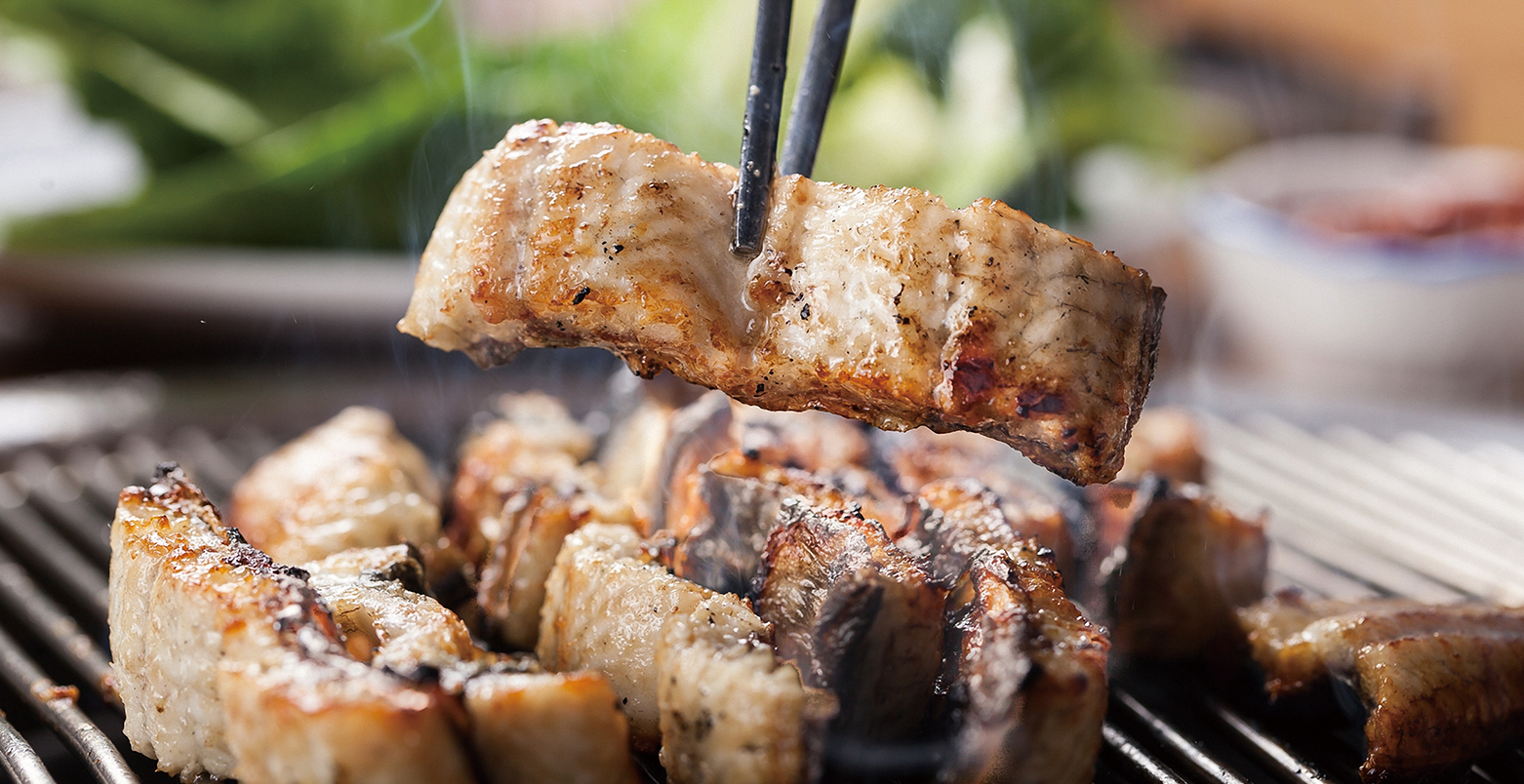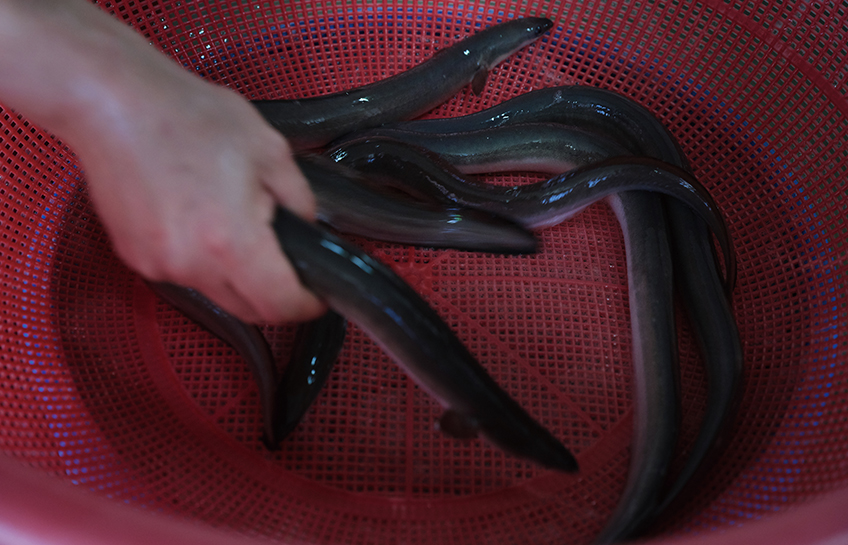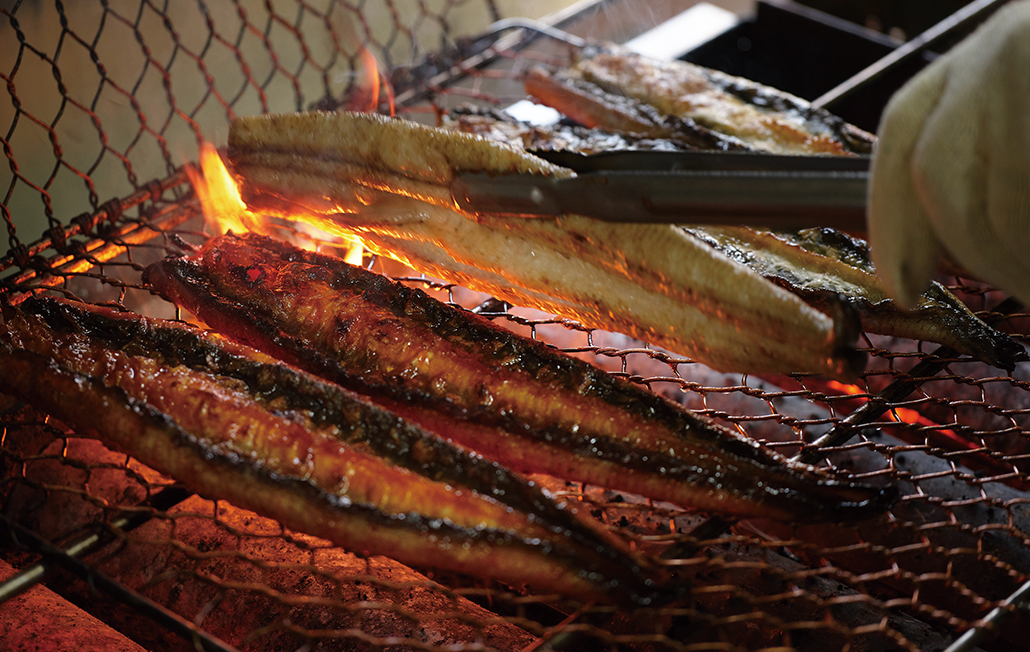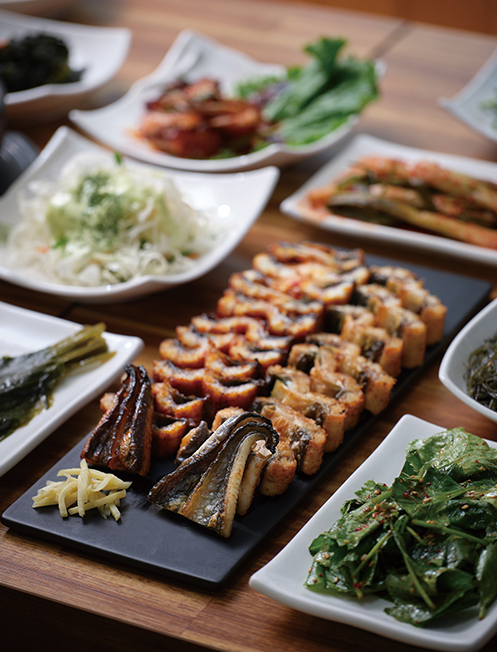
Contents










Local Taste · Written by Jang hee-joo Photographed by Studio Kenn
Between the Sea
and the River
Pungcheon Jangeo-gui
Better known as baem-jangeo, the eel dish pungcheon jangeo is a specialty of Jeollabuk-do Province.
The Incheongang River flows to the big body of waters in Gochang-gun County surrounded by rocks
carved by waves and winds. Swimming thousands of kilometers between the sea and the river,
premium quality eels find their home in this region. These slithery creatures are highly sought after as
the ultimate health food that nourishes the body and restores energy.

Jangeo’s chewy texture distinguishes itself from other fish dishes.
Koreans consider jangeo (eel) the top health food for boosting energy. Able to swim for thousands of kilometers even without eating, these snake-like creatures have unusual physical endurance, and this is why they are believed to provide vigorous energy.
While eels normally fall in to four categories depending on where they live, pungcheon jangeo is baem-jangeo. As pung means “wind” and cheon “river” in Korean, the name pungcheon indicates the windy area around the mouth of the Incheongang River, where freshwater meets the sea and in which pungcheon jangeo is usually caught. It stretches as long as 10 km, making it the perfect environment for eels to adapt to saline water before going back to the sea to lay eggs.
Baem-jangeo live in freshwater for 5 to 12 years and travel to the sea for spawning eggs around August to October. Swimming along the warm currents on the way to the Pacific Ocean is a long journey that requires strength. Once they get to their destination in the deep waters of the Pacific, they commit themselves to their mission and end their lives. Baby eels, just like their mothers, also embark on an adventurous journey to the river despite merciless waves. When they reach the river, they are called silbaem-jangeo, which are commonly caught to be used for farming.
Mysterious Life
Decades ago, nobody knew that the spawning grounds of these eels were located thousands of meters deep into the sea. Even with that knowledge, it remains unclear what baby eels need to be fed early in life, and the technique to artificially spawn and hatch the eggs remains unknown. Thus the only way to farm jangeo is to catch the silbaem-jangeo flowing into the river from the Pacific Ocean. This has caused an overall decline of the eel population and a hike in prices.
The secret to the province’s famous dish pungcheon jangeo is found in the farming process. The holding period at the end of farming focuses on eliminating bodily waste from the fish. Eels that grew up in freshwater are left in sea water for a few months without being given any food. This process of adapting to a new environment requires eels to get rid of all bodily waste and they lose half of their weight in six months. In addition, this method enhances their meaty texture and flavorful taste.

Jangeo, with its vigorous energy, keeps trying to escape through the fingers when caught with bare hands.
Tips on Eating Jangeo-gui
Finding the best this delicacy offers requires a trip to Seonunsa Buddhist Temple in Gochang-gun. The country’s most famous pungcheon jangeo restaurants are lined up at the gate.
Pungcheon jangeo can be enjoyed two ways. One is to simply grill it with salt and the other is to glaze it with sauce before grilling. The former manner is recommended for those who prefer an authentic taste, but the latter method makes the dish more savory and flavorful without leaving a strong fishy taste. While each restaurant’s recipes vary, the sauce is generally made with eel broth, red pepper paste and powder, starch syrup, soy sauce, refined rice wine, and grated garlic and ginger. And while there is nothing extraordinary about cooking pungcheon jangeo other than the need to grill it three times, the simple and short process is designed to bring out the natural flavor of the food instead of the spices.
Not all jangeo offer the same flavor. Larger jangeo meat is likely to be more cohesive and firm while smaller eels are rather tender and delicate. Since jangeo is a particularly greasy fish, the fish oil must be removed before grilling to accentuate the flavor. Seeing a chef cooking the food on a grill looks as impressive as an artisan creating a work.
Jangeo-gui (gui means grilled) usually comes with other side dishes filling a big table. From handmade acorn jelly to a variety of kimchi, side dishes will stimulate the appetite even before the main dish is served. Jangeo-gui is wrapped in pickled mulberry leaves, fermented kimchi or green onion kimchi and then dipped in a raspberry wine sauce; the perfect bite releases the juice from the fish. The longer it stays in the mouth, the longer its light yet savory taste lasts.
 The secret to juicy jangeo-gui is to gently flip it when grilling.
The secret to juicy jangeo-gui is to gently flip it when grilling.
Other Articles















